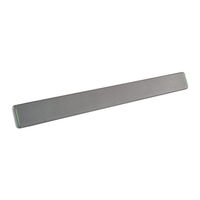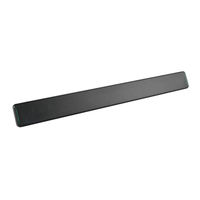
Shure MXA710 Series Array Microphone Manuals
Manuals and User Guides for Shure MXA710 Series Array Microphone. We have 3 Shure MXA710 Series Array Microphone manuals available for free PDF download: Manual, User Manual
Advertisement
Shure MXA710 Series Manual (43 pages)
2-Foot and 4-Foot Linear Array Microphone
Brand: Shure
|
Category: Microphone
|
Size: 12 MB
Table of Contents
Shure MXA710 Series User Manual (37 pages)
2-Foot and 4-Foot Linear Array Microphone
Brand: Shure
|
Category: Microphone
|
Size: 9 MB
Table of Contents
Advertisement
Advertisement


